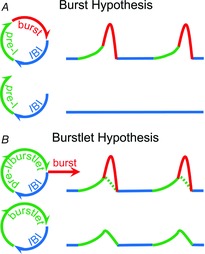Figure 4. The burstlet hypothesis for rhythmogenesis fundamentally breaks with the burst hypothesis.

A, top, in the burst hypothesis, the interburst interval (IBI; blue) is a quiescent phase that leads to pre-inspiratory (pre-I) activity (green) and then the necessary generation of a high amplitude burst (red). Bottom, blockade of bursts in this model would lead to interruption of the rhythmogenic cycle and cessation of rhythmic activity. B, top, in the burstlet hypothesis, the IBI (blue) leads to burstlets (green), which are sufficient for rhythmogenesis. Generation of high amplitude bursts (red) is a distinct step and not essential for generation of rhythmic activity. When bursts occur, burstlets appear as pre-I activity (dotted green line) preceding bursts. Bottom, by lowering excitability or adding Cd2+, bursts disappear but rhythmic preBötC burstlets remain, contradicting the burst hypothesis.
